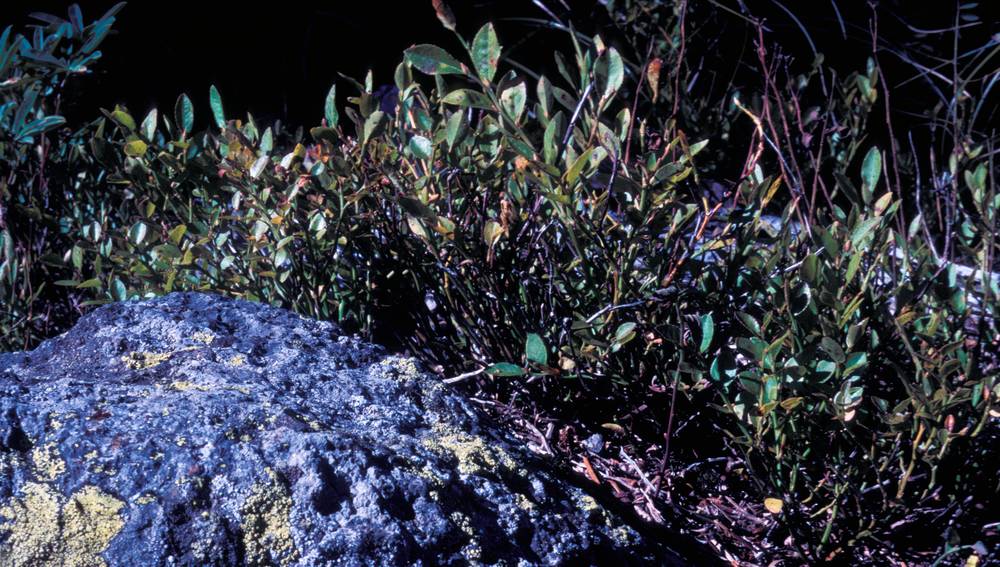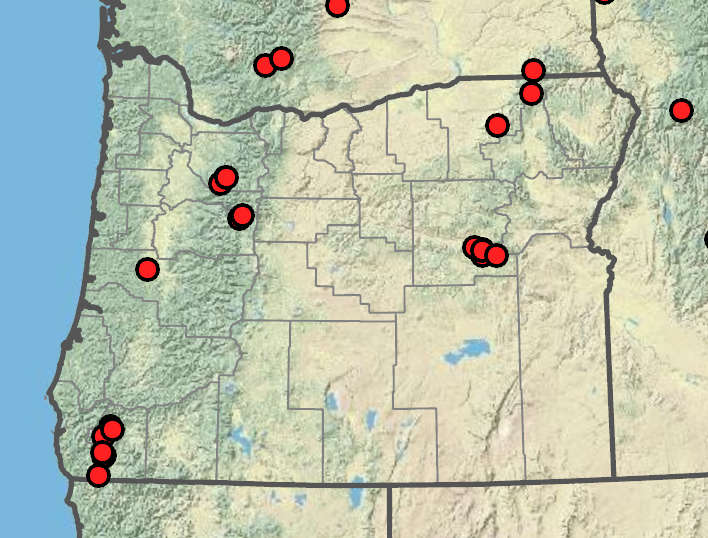Vaccinium myrtillus
Ericaceae
whortleberry
heath family
erect to decumbent or prostrate, glabrous or hairy.
elliptic to ovate, 11–20(30) × 5–10 mm, light green abaxially, green adaxially; thin; flexible;
margins sharply serrate from tips to near base, prominently veined;
tips acute;
surfaces abaxially glandular, adaxially glabrous.
normal, reduced, or absent;
basal rosettes or cauline, usually alternate but sometimes opposite or whorled; simple; leathery or not;
margins entire or toothed; plane or revolute;
petioles present or absent;
stipules absent.
solitary flowers in axils.
terminal or axillary racemes; panicles;
cymes or flowers solitary, generally bracted.
sepals 5;
calyces shallowly lobed, glabrous;
petals 5;
corollas ovoid-urceolate to globose, 3–7 × 4–7 mm, white to pink, glaucous;
filaments glabrous.
bisexual, radially or bilaterally symmetric;
sepals 3–5; distinct or fused basally;
petals 3–5; distinct or fused;
stamens 5–10;
anthers awned or not, dehiscent by pores or slits;
styles 1;
stigmas 1, generally 5-lobed.
4–9 mm in diameter, dark red to bluish black; without a bloom.
capsules; berries, or drupes.
winged or not.
=24, 48.
Vaccinium myrtillus
Ericaceae
Wet mid- to high elevation areas. Flowering Apr–Jul. 1100–2100 m. BW, Casc, Sisk. ID, NV, WA; northeast to Alberta and southeast to NM, Greenland; Asia, Europe. Native.
Morphologically, Vaccinium myrtillus is similar to V. scoparium, and at higher elevations their ranges overlap. Vaccinium myrtillus differs from V. scoparium by its generally larger leaves and flowers, often sparsely puberulent twigs, and its broom-like habit.
Nearly worldwide. ~120 genera; 26 genera treated in Flora.
Some authorities treat the subfamilies of Ericaceae as distinct families. Within Oregon, these would include Monotropaceae, Pyrolaceae, and Vacciniaceae. Conservatively, we have chosen not to recognize these families. Non-photosynthetic ericaceous species are often referred to as saprophytes, plants that use decaying or non-living organic matter for nourishment. In reality, these species are true parasites, obtaining all of their nutrition from mycorrhizal fungi, which in turn parasitize photosynthetic plants, usually conifers. They are more appropriately referred to as epiparasites or mycotrophs.
Stephen Meyers
- Local floras:
BC,
OR,
WA
- Local Web sites:
Flora NW,
PNW Herbaria
WildflowerSearch
iNaturalist (observations)
USDA Plants Database
- LBJ Wildflower Center
- SEINet
- Plants of the World Online
- Encyclopedia of Life
- Wikipedia
- Google Image Search
- Local floras:
CA,
OR
- Local Web sites:
CalFlora,
CalPhotos,
Flora NW,
PNW Herbaria
WildflowerSearch
iNaturalist (observations)
- LBJ Wildflower Center
- SEINet
- Plants of the World Online
- Encyclopedia of Life
- Wikipedia
- Google Image Search



